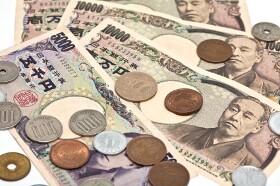The Japanese yen is holding steady on Monday as the national economy grew at its fastest pace in two years during the second quarter. Japanâs economic outlook for the rest of 2018 might be gloomy because of recent natural disasters and potential trade tensions with the US.
According to a Cabinet Office data report, the April-to-June gross domestic product (GDP) grew at an annualized 3%, beating market forecasts of 2.6%. This is the fastest growth since the beginning of 2016.
Moreover, the capital expenditure part of the Q2 GDP advanced 3.1%, defeating the median estimate for 2.8%. This, too, was the fastest increase in nearly four years. Capital expenditures remain bullish in the worldâs third-largest economy.
In other components of the report, private consumption, which represents nearly two-thirds of GDP, rose 0.7% compared to the first quarter, unchanged from previous forecasts. Domestic demanded surged 0.9%, but net exports dipped 0.1%.
An August business confidence index, comprised of so-called economy watchers, stood at 48.7, jumping 2.1 points from July.
Despite the plethora of bright spots in the report, Japanâs economic outlook is concerning analysts. Last week, Japan endured a typhoon, an earthquake, and floods. The natural disasters are widely expected to eat away at growth over the coming months, with certain sectors decimated, transportation links destroyed, and infrastructure devastated.
What makes matters worse for Japan is a Wall Street Journal reported that suggested President Donald Trumpâs next trade target is Tokyo. Though he maintains a great relationship with Prime Minister Shinzo Abe, the newspaper quoted Trump as saying, âOf course that will end as soon as I tell them how much they have to pay.â
US-Japan trade totals $205 billion every year, so a trade dispute would have serious ramifications for both sides.
The International Monetary Fund (IMF) published a report on Monday that warned a US-Japan trade spat could shrink Tokyoâs GDP by 0.6%.
Simulation analysis suggests that an increase in trade tensions would come at a cost for the countries involved and the global economy.
While global growth remains broadly robust, the rising wave of trade tensions, new tariffs, and counter-tariffs represents a significant downside risk for advanced and emerging markets alike.
The USD/JPY currency pair rose 0.07% to 111.11, from an opening of 111.03, at 16:16 GMT on Monday. The EUR/JPY surged 0.53% to 128.92, from an opening of 128.24.
If you have any questions, comments or opinions regarding the Japanese Yen,
feel free to post them using the commentary form below.
